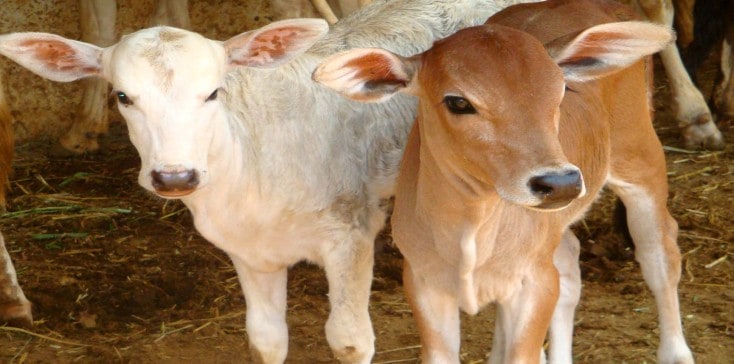
Preventing Sub-clinical Hypocalcaemia in Recently Calved Cows
Hypocalcaemia is a major problem in high yielding dairy cows, especially crossbreds and buffaloes. Although the clinical cases of hypocalcaemia, commonly terms Milk Fever, occurs in around 5% cows but the major problem is subclinical hypocalcaemia. In subclinical cases the symptoms are not specific, but since calcium is required in number of metabolic pathways, including signal pathways for hormone mediated chemical actions in the body, low levels of calcium in the body has over-arching effects in cows. It is therefore important that the farmers focus on preventing hypocalcaemia. Several studies have shown that the cows that have normal serum calcium levels during first 21 days post-partum, are more likely to have higher pregnancy, lesser uterine infections and mastitis.
But the other problem is that higher supplementation of calcium is also detrimental as the absorption becomes passive, instead of active transport when calcium in the feed is optimum, and the net absorption is lesser.
There are several strategies to ensure that the cows after delivery are fully ready to mobilize body calcium. To achieve this objective, there are two strategies: (a) feed negative DCAD feed with some added calcium, which is difficult to follow by the small-hold Indian farmers as this require change in the mineral mixture composition. A better option is to feed calcium orally or administer parentally immediately after parturition. The later strategy is more logical as most of the farmers do feed ‘warming up’ feed after parturition and calcium can be added into this feed. The farmers should know that when calcium is given orally, a part of calcium is also rapidly absorbed from rumen (fore-stomach) whereas the leftover is absorbed from intestine.
The rumen calcium absorption is found to be higher when calcium is ionized form. The ionization of calcium will depend on the source of calcium, pH of rumen and the water content of the rumen fluid. Amongst the source calcium chloride is supposed to be a better source for quick ionization but, calcium chloride supresses the feed intake hence it should be fed with caution. Up till now the major understanding was that the calcium when given orally is absorbed from the intestine. Although some evidence on absorption of calcium from rumen were published in sheep and goat, the data on calcium was not available. The issue of interest is to understand the mechanism of absorption since hastening calcium uptake from rumen would lead to formulations wherein pushing calcium in the body, such as, after calving or in milk fever cases, is urgent.
The research has shown that there is presence of an active calcium transport across the rumen wall which can be influenced by short-chain fatty acids, such as propionate, acetate and butyrate. Out of these, butyrate was found to exert higher influence than others but the highest effect was seen when all the three short chain fatty acids were present. The data suggest that if 40 g calcium is administered orally, the absorption of calcium across the rumen epithelium can be optimized. Oral calcium should be given3-4 times; 2 hours after parturition and two doses in 24 hours interval.
Parental administration of calcium
An easy to implement strategy is to administer 150 ml calcium gluconate to each high-risk cow two hours after parturition. Calcium gluconate is a better product than calcium chloride. An important point in mineral utilization in the body is how much of it is in ionized form in the body. Unless the mineral is in ionized form it will not cross the cellular barrier. For example, calcium is needed for metabolic functions inside the cell, hence it should be able to translocate. Calcium gluconate or boro-gluconate is that its pKa (that is the pH at which calcium will be ionized) is 3.7, whereas the blood pH is 7.2 hence once administered entire calcium gluconate will be ionized and available for utilization.
Calcium chloride injection although it contains more calcium on mole basis compared to the calcium gluconate, it must be given intravenously, slowly for fear of severe cardiogenic reaction and should not be given under the skin or in the muscles. In conclusion, the recommended strategy is that the farmers should feed calcium chloride/calcium propionate or calcium gluconate 40-50 g two hours after parturition and allow the animal to drink as much water as possible. The oral dosing can be repeated two more times at 24 hours interval.
Alternatively, each high-risk cow should be administered 150 ml calcium gluconate or calcium boro-gluconate subcutaneously injected at two places 2 hours after parturition. In case the cow is showing signs of milk fever, in that case, instead, calcium boro-gluconate should be administered intravenous followed by half of the dose under the skin. A simple preventive strategy, narrated here, will be useful in preventing numerous problems in dairy cows and buffaloes.
Read: Organic Phosphinate Compounds Are Ineffective in Treating Phosphorous Deficiency in Animals
